NASA has unveiled a surprising assortment of cosmic photographs that showcase the breathtaking fantastic thing about the universe, revealing the intricate buildings and vibrant colors of celestial our bodies. Utilizing specialised telescopes designed to seize infrared mild, these never-before-seen photographs of the Solar, Andromeda Galaxy, and varied nebulae present a singular glimpse into the dynamic nature of our stellar surroundings.
Among the many highlights are a composite picture of the solar, showcasing its highly effective photo voltaic exercise, and the enchanting Orion nebula, which reveals hidden mud and big stars. The Eagle Nebula, house to the enduring “Pillars of Creation,” together with high-resolution views of the Andromeda Galaxy and the colorful Godzilla Nebula, additional illustrate the wonders of the cosmos.
NASA’s never-seen photographs of the cosmic
The Solar: A 3-telescope perspective
One of many highlights is a composite picture of the solar, created utilizing knowledge from three superior NASA telescopes: the Nuclear Spectroscopic Telescope Array (NuSTAR), the X-ray Telescope (XRT), and the Atmospheric Imaging Meeting (AIA). This spectacular picture combines high-energy X-ray knowledge, lower-energy X-ray knowledge, and ultraviolet mild collected by these devices.
NuSTAR specialises in capturing high-energy X-rays, whereas the XRT and AIA detect a broader vary of wavelengths emitted throughout the solar’s floor. The ensuing picture supplies a complete view of the solar’s advanced options, showcasing its dynamic and ever-changing nature.
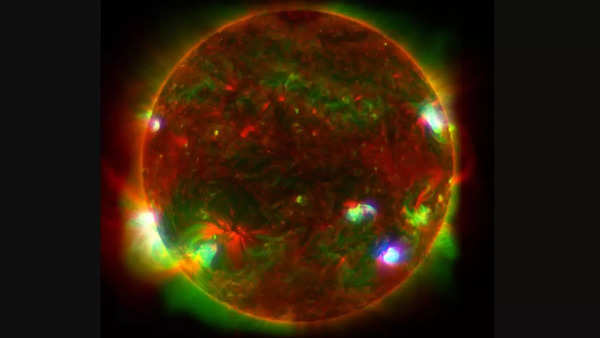
Picture supply: NASA
Orion Nebula: A hidden world of mud
The Orion Nebula picture, produced from beforehand launched knowledge from three telescopes, highlights a area stuffed with mud however devoid of seen stars. The picture reveals two monumental cavities carved out by large, unseen stars able to releasing as much as 1,000,000 instances extra mild than our Solar. These cavities have been created by radiation that cleared away mud grains.
On this depiction, blue mild signifies heat mud heated by these large stars, whereas the greenish hue signifies barely cooler mud, showcasing the intricate interaction of sunshine and matter inside this nebula.
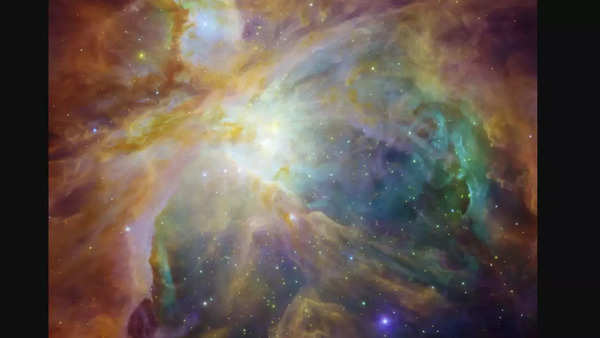
Picture supply: NASA
Eagle Nebula: The Pillars of Creation
One other breathtaking picture comes from NASA’s Large Discipline Survey Explorer (WISE), capturing the Eagle Nebula, situated roughly 5,700 light-years from Earth. This picture highlights a star formation area and showcases the enduring “Pillars of Creation,” which seem in faint yellow-green inside the picture. The construction of the nebula is fantastically illuminated in infrared mild, revealing the advanced and wealthy surroundings the place new stars are born.
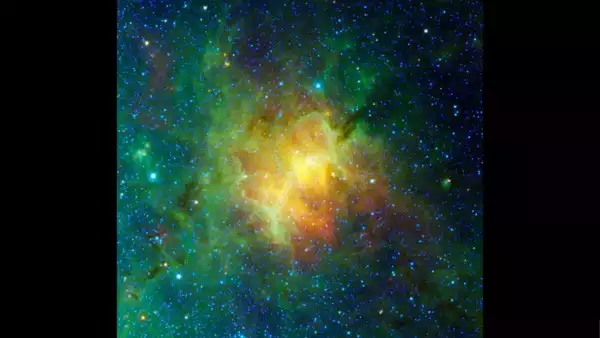
Picture supply: NASA
Andromeda Galaxy: A high-resolution view
NASA additionally launched a picture of the Andromeda Galaxy, often known as M31, produced utilizing knowledge from varied missions, together with the European Area Company’s (ESA) Herschel mission and retired NASA missions such because the Infrared Astronomical Satellite tv for pc (IRAS) and Cosmic Background Explorer (COBE).
This high-resolution picture captures the galaxy’s intricate mud clouds, with color coding indicating totally different parts: pink signifies hydrogen gasoline, inexperienced represents chilly mud, and hotter mud is proven in blue.
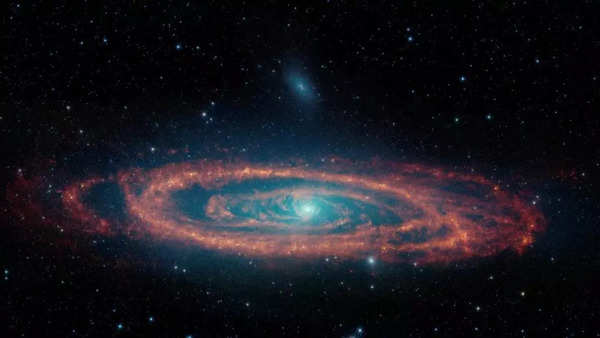
Picture supply: NASA
Godzilla Nebula: A vibrant cosmic show
Lastly, the Spitzer Area Telescope captured a unprecedented picture of the Godzilla Nebula, situated about 7,800 light-years from Earth. This vibrant image, taken utilizing infrared mild, reveals a cloud of gasoline and dirt in area, with the distinctive define of “Godzilla” seen inside the construction. The intense area within the decrease left is named W33. In keeping with NASA, mud and natural molecules known as hydrocarbons seem inexperienced, whereas heat mud heated by stars or supernovae is depicted in pink.
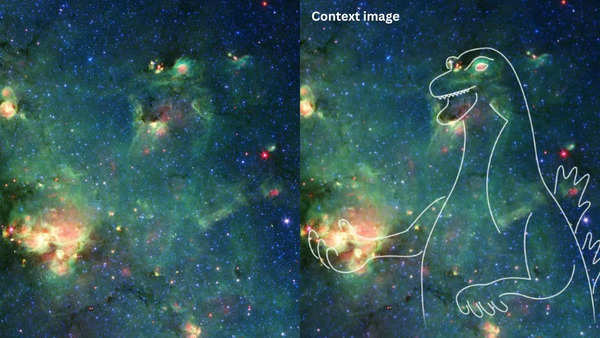
Picture supply: NASA
Additionally learn: NASA’s spectacular pictures of Venus’: Unveiling the planet’s mysterious surface and atmosphere



